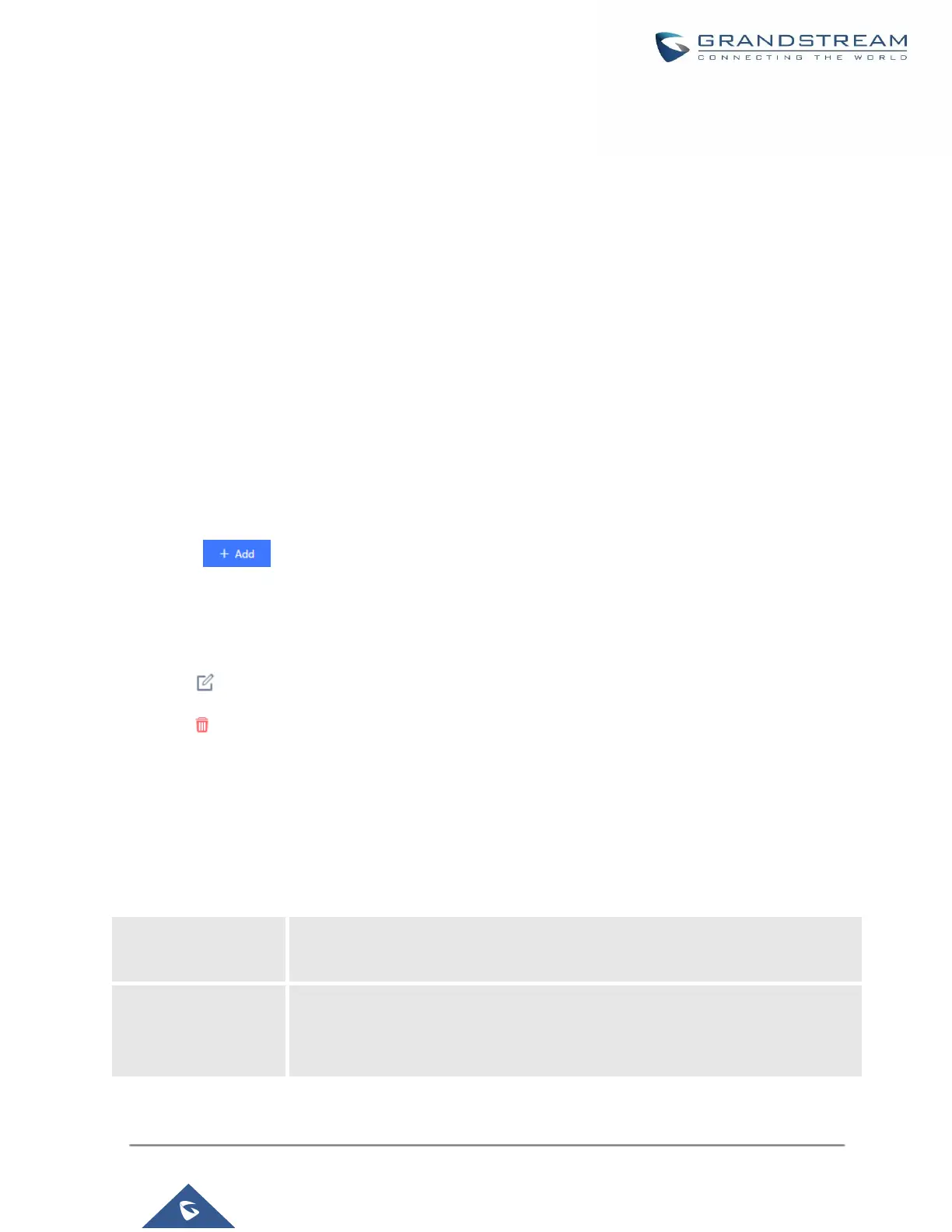CALL ROUTES
Outbound Routes
In the following sections, we will discuss the steps and parameters used to configure and manage outbound
rules in UCM630X, these rules are the regulating points for all external outgoing calls initiated by the UCM
through all types of trunks: SIP, Analog, and Digital.
Configuring Outbound Routes
In the UCM630X, an outgoing calling rule pairs an extension pattern with a trunk used to dial the pattern. This
allows different patterns to be dialed through different trunks (e.g., "Local" 7-digit dials through an FXO while
"Long distance" 10-digit dials through a low-cost SIP trunk). Users can also set up a failover trunk to be used
when the primary trunk fails.
Go to Web GUI→Extension/Trunk→Outbound Routes to add and edit outbound rules.
• Click on to add a new outbound route.
• Click the "Import" button to upload the outgoing route in .CSV format.
• Click the "Export" button to generate outgoing routes in .CSV format.
• Click to edit the outbound route.
• Click to delete the outbound route.
On the UCM630X, the outbound route priority is based on the “Best matching pattern”. For example, the
UCM630X has outbound route A with pattern 1xxx and outbound route B with pattern 10xx configured. When
dialing 1000 for an outbound call, outbound route B will always be used first. This is because pattern 10xx is a
better match than pattern 1xxx. Only when there are multiple outbound routes with the same pattern configured.
Table 67: Outbound Route Configuration Parameters
Configure the name of the calling rule (e.g., local, long_distance, etc.). Letters,
digits, _ and - are allowed.
All patterns are prefixed by the "_" character, but please do not enter more than
one "_" at the beginning. All patterns can add comments, such as "_pattern /*
comment */". In patterns, some characters have special meanings:
